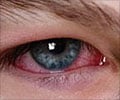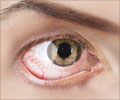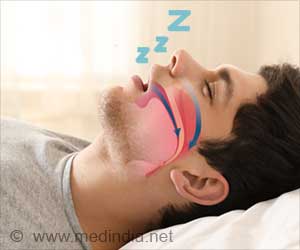If a person presents with dry eyes, a simple test of eyelid sensitivity may help vision professionals in evaluating this most common eye-related symptom.

The researchers then looked at how eyelid sensitivity was related to the function of some specialized structures of the eyelid margin. A special dye was also used to stain the innermost layer of the eyelid margin to assess the function of the meibomian glands, which secrete a specialized oil-like substance into the tear fluid.
The results showed some surprising differences between the upper and lower eyelids—including greater sensitivity of the lower-lid margin, compared to the upper lids.
And it was this increased lower lid sensitivity that was found to be related to hyperosmolarity of the tear film—that is, more concentrated tears. The finding suggests the potential for a new approach to clinically assessing tear osmolarity via lower lid sensitivity measures. Whereas past studies have shown a relationship between corneal sensitivity and osmolarity, none have addressed the possible lid sensitivity relationship. The ease with which the non-transparent lids can be accessed to measure sensitivity provides a potential clinical advantage over measuring sensitivity to touch on the cornea.
By comparison, the relationship between tear osmolarity and staining appears much more ambiguous.
The authors' results emphasize clear differences in staining and sensitivity between the upper and lower lids; for example the upper lids appear to be less sensitive and they stain less. Such findings may turn out to be important for interpretation of future studies of the dry eye condition.
Advertisement
Recent research has led to increased understanding of the delicate structure and function of the lid margin, and their contribution to common eye-related symptoms. "There is renewed interest in the role of the eyelids in dry eye and meibomian gland dysfunction," comments Anthony Adams, OD, PhD, Editor-in-Chief of Optometry and Vision Science.
Advertisement
Source-Eurekalert















